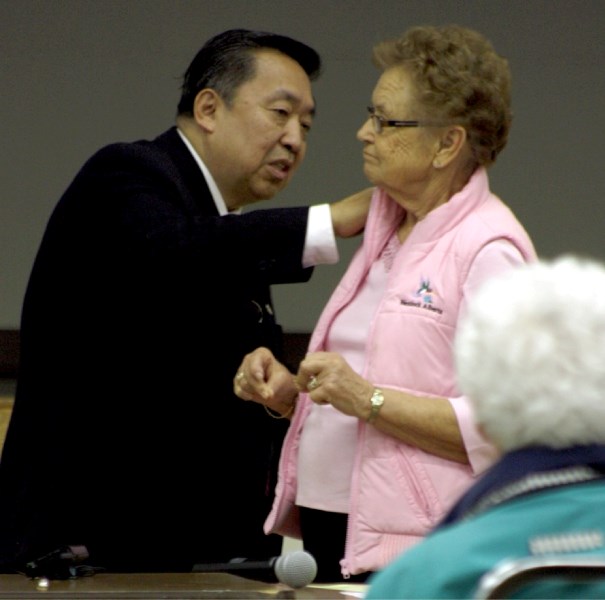In Western society, it can be easy to dismiss Eastern medicinal practices as quackery, but 60 people who attended his lecture last Friday are likely to give it a second thought.
Dr. Steven Aung, who is trained in both Western and Eastern medicine, gave a presentation at Memorial Hall last Friday for the “Art of Aging” conference, hosted by the Westlock Adult Learning Centre.
He spoke of many things in his two-hour presentation, including simple exercises people can do to begin to reap the benefits of traditional eastern knowledge.
“The main thing is I want them to take is the knowledge of traditional Chinese medicine, he said, “the techniques of self-preventative medicine such as meditation, tai chi and qi gong, which would be useful for that.”
Many of the practices and exercises he recommends revolve around the traditional Eastern belief in a body’s natural energy known as chi (sometimes spelled qi), and how when the energy is out of balance it can cause many types of negative external symptoms.
He is trained in Western medical techniques and has been practicing for nearly 30 years; he also has 40 years of experience with Eastern methods.
Aung demonstrated his techniques on several audience members who were in pain of one variety or another, and the results were impressive.
Olga Wingrove said she was suffering pain that, among other things, greatly reduced her mobility and flexibility.
After a quick demonstration from Dr. Aung – who used a qi gong method to rid that particular area of Wingrove’s body from negative energy – Wingrove lifted her arm and proclaimed the treatment had been successful.
“I’ve seen two orthopedic surgeons. One wanted to do a shoulder repair surgery immediately, and the other one gave me a cortisone shot,” he said. “This helped more.”
Afterwards, she said she wanted to pursue this type of treatment again, despite having never looked into it before.
“I was skeptical,” she said. “Who isn’t?”
Gail Huff also had a treatment, and Dr. Aung demonstrated that the same type of treatment can be effective from 10 feet away, as well.
She clearly had positive results, and hugged Aung afterwards. She said she has had prior experience with Eastern medicine, after having suffered from pain related to surgery more than 20 years ago.
“I’ve tried all kinds of things,” she said. “I believe this works.”
More and more people turn to Eastern alternatives – and not just on the fringes, but mainstream medical schools are beginning to appreciate the benefits as well. At the University of Alberta’s medical school, Aung said, they now teach acupuncture.
“It’s a major breakthrough in all of North America,” he said.
While the techniques themselves clearly have benefits, Aung said, people should also be aware that effective treatment should be ongoing prior to the patient getting sick.
“The important thing is the patient should understand they should be treated when they are healthy, not only treating the disease or the symptoms.”



